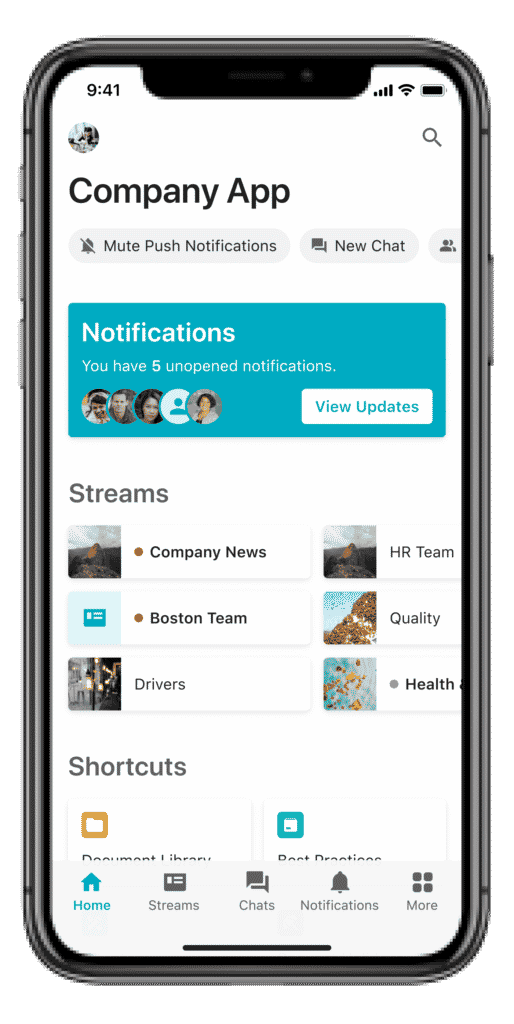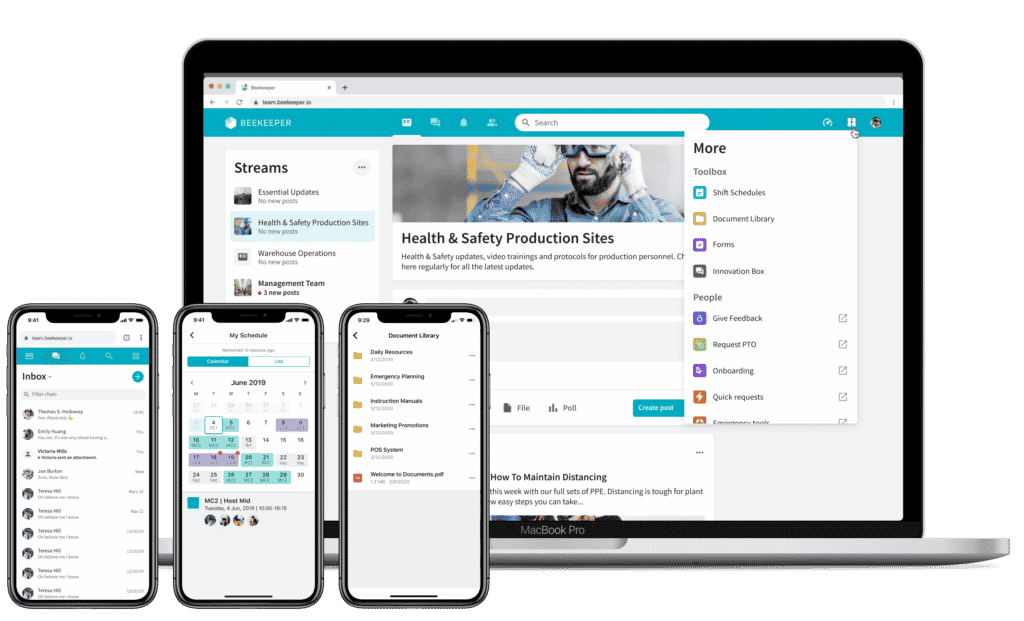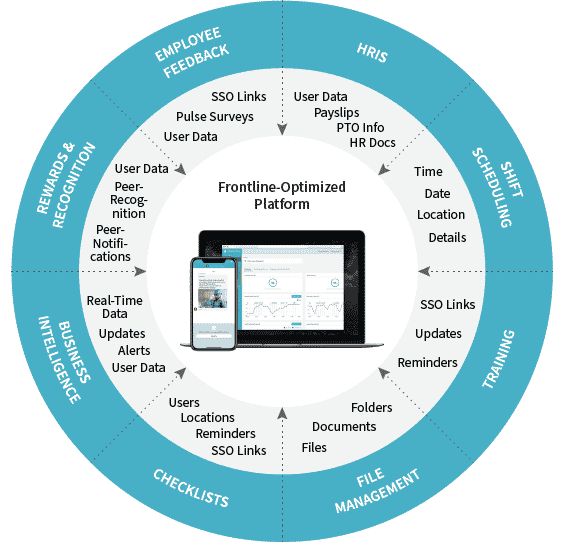
Technology can be many things. It can be exciting, challenging, or sometimes, frustrating. But, for frontline workers – it’s empowering.
Frontline employees make up the bulk of the global workforce, yet they are often forgotten about in their company’s digital strategy. But with COVID-19 putting essential workers at the forefront of public conversation, many companies are finally embracing the power of digital enablement for the frontline.
Want to get a head start? Here’s a sneak peek at some of the topics we cover in our newest report.
Learn What Digital Transformation Actually Means
Surprisingly, some companies still communicate through static channels, like bulletin boards, posters, and word of mouth.
Here’s the downside of that:
- These channels aren’t measurable
- Employees lose an average of 3 hours per week looking for information
- Managers spend 60% of their time making up for the slack with more meetings
So, what does the digital transformation really look like?

Here are the four stages of the frontline digital transformation:
- Reach and Connect: Prioritize connecting the entire workforce with a centralized channel
- Digitize: Make important materials, like scheduling and training documents, digital for easier access
- Automate: Use integrations and chatbots to save time
- Optimize: Use data and analytics to continuously improve processes
Once on the other side, you have an organization equipped to:
- Ensure everyone’s safety in the workplace
- Improve frontline employee engagement and performance
- Remain flexible during crises
- Empower employees with important information no matter where they are
Usher in a Digital Strategy to Succeed in the New Normal

COVID-19 spun the world on its head. Companies without a digital communication strategy for their frontline workers faced challenges frontline-heavy workforces have long since dealt with.

With the return to normal underway, businesses are adopting new tools as part of the pandemic’s lingering effects.
What is here to stay:
- Dispersed (but connected) workforces. Companies are adopting long-term WFH policies, while frontline workforces remain separated from the in-office employee base. This means many businesses now face the challenge of how to keep everyone connected digitally.
- Instant access to digital information. With health and safety regulations constantly changing, companies need the ability to alert employees fast. Materials also need to be digitized, so updates can be made within seconds to remain in compliance.
- Flexible, mobile-friendly communication. Frontline versus in-office versus remote. No matter what your workforce looks like now, it will likely remain distributed. To stay connected to all workers, companies are adopting flexible communication tools that can be accessed from anywhere on mobile devices.
Adopt Centralized Workspaces Through Mobile Tech
Sometimes there are just too many digital tools to keep up with.
So, it’s no surprise that over 60% of companies with majority frontline employees want a digital workplace to centralize communication.
Mobile-friendly communication tools, like Beekeeper, are giving the frontline a centralized platform that houses all the tools they use on a daily basis. That one-stop-shop makes it easier to access information when actually on the front line or in-person with a customer.
Attract the Future Frontline

96 and 22. Why are these numbers important?
● 96% of workers ages 18-29 in the U.S. own a smartphone
● 22% of younger adults rely only on their mobile devices for internet access
This means the incoming generation of frontline employees don’t view access to digital tools as optional. They are coming into the workforce expecting communication through the mobile devices they’ve grown up using.

Companies that want to attract and retain a younger generation of employees should get comfortable using digital tools. Quickly.
Ready to start building your company’s digital transformation? Take a look at our newest white paper, “Frontline Worker Technology Report” today!

About the author
Beekeeper
Interested in learning more?
Join 1200+ companies transforming frontline work with Beekeeper. Start your journey today to make every task easier, every team stronger, and every shift smoother.






